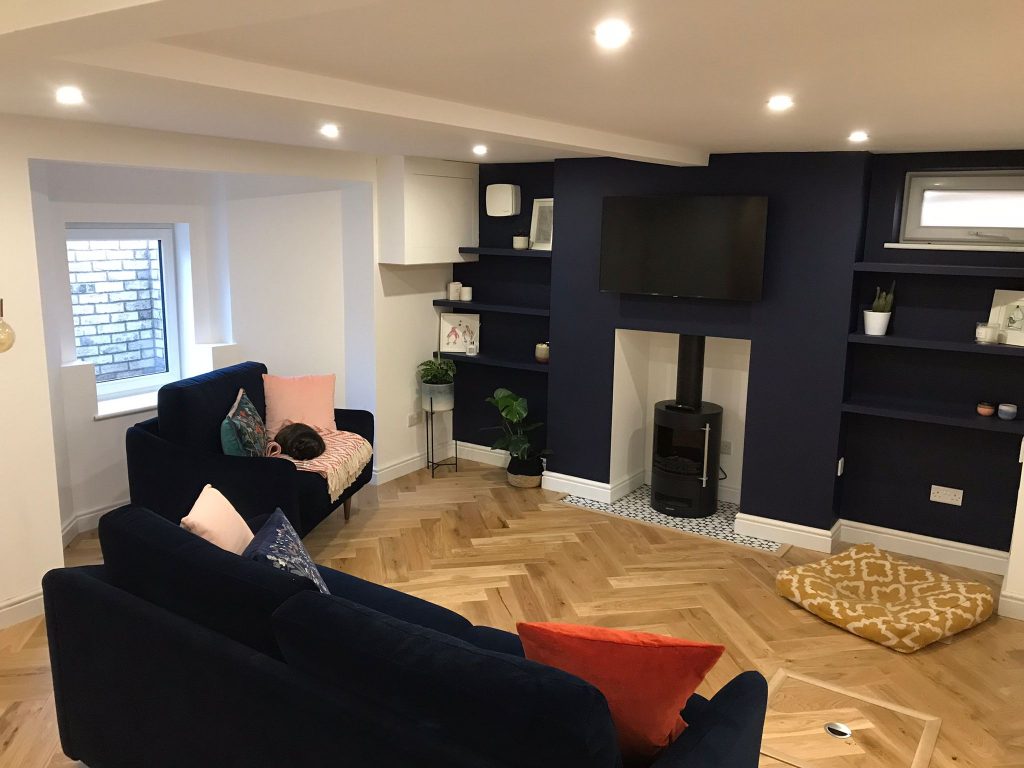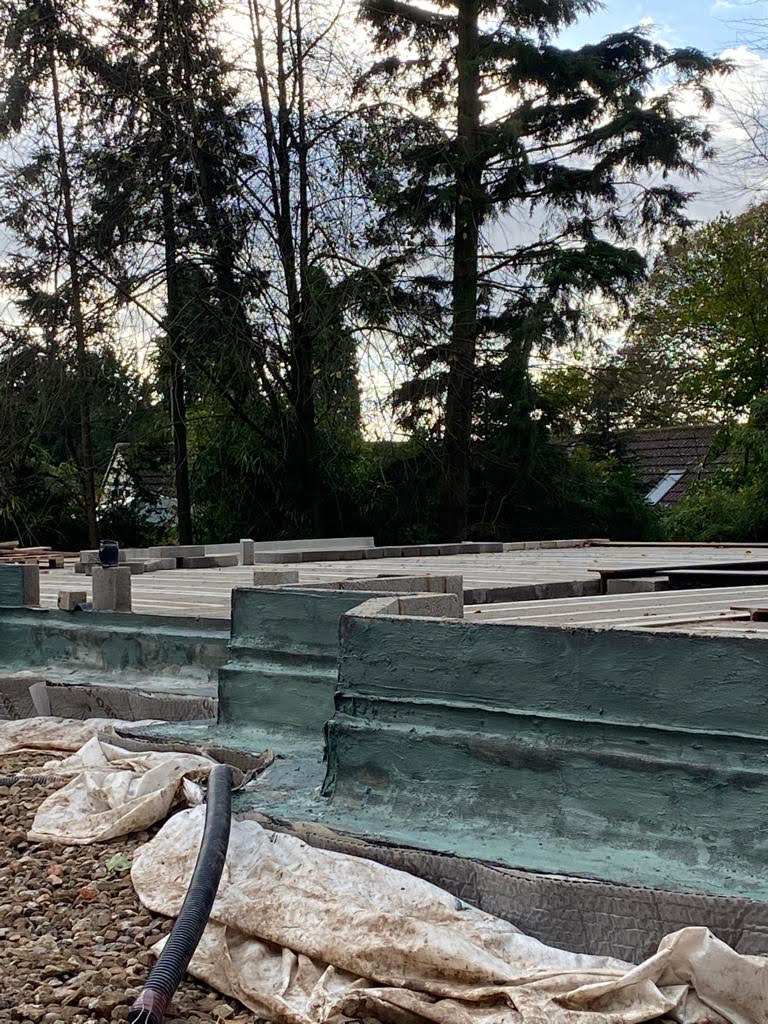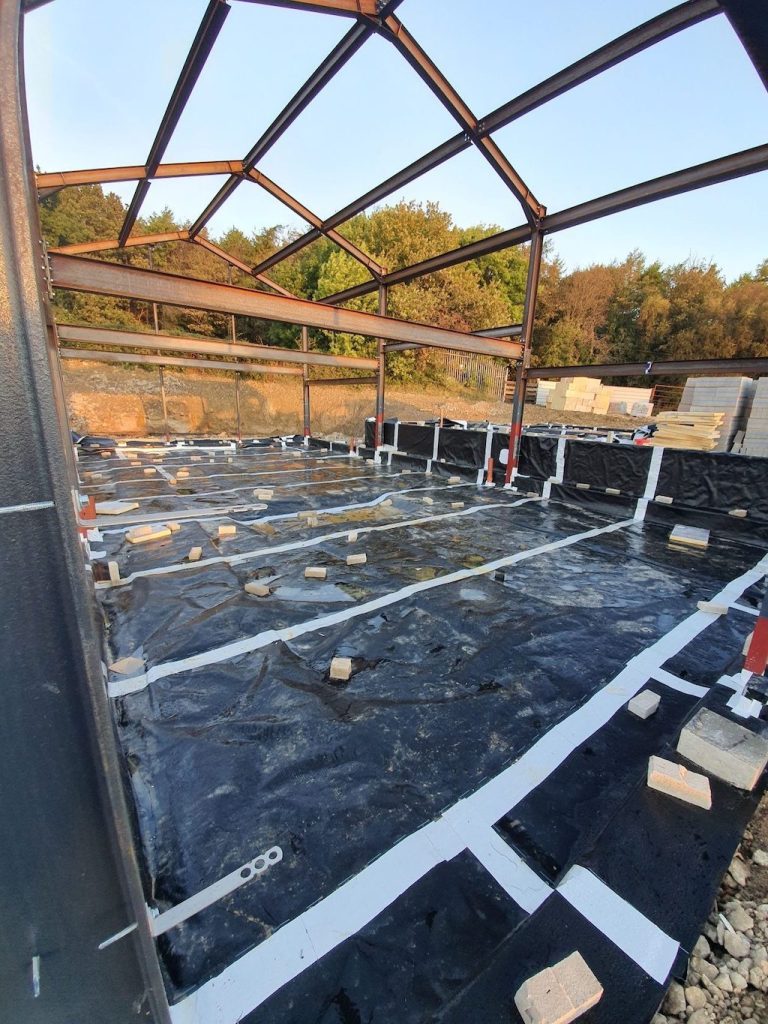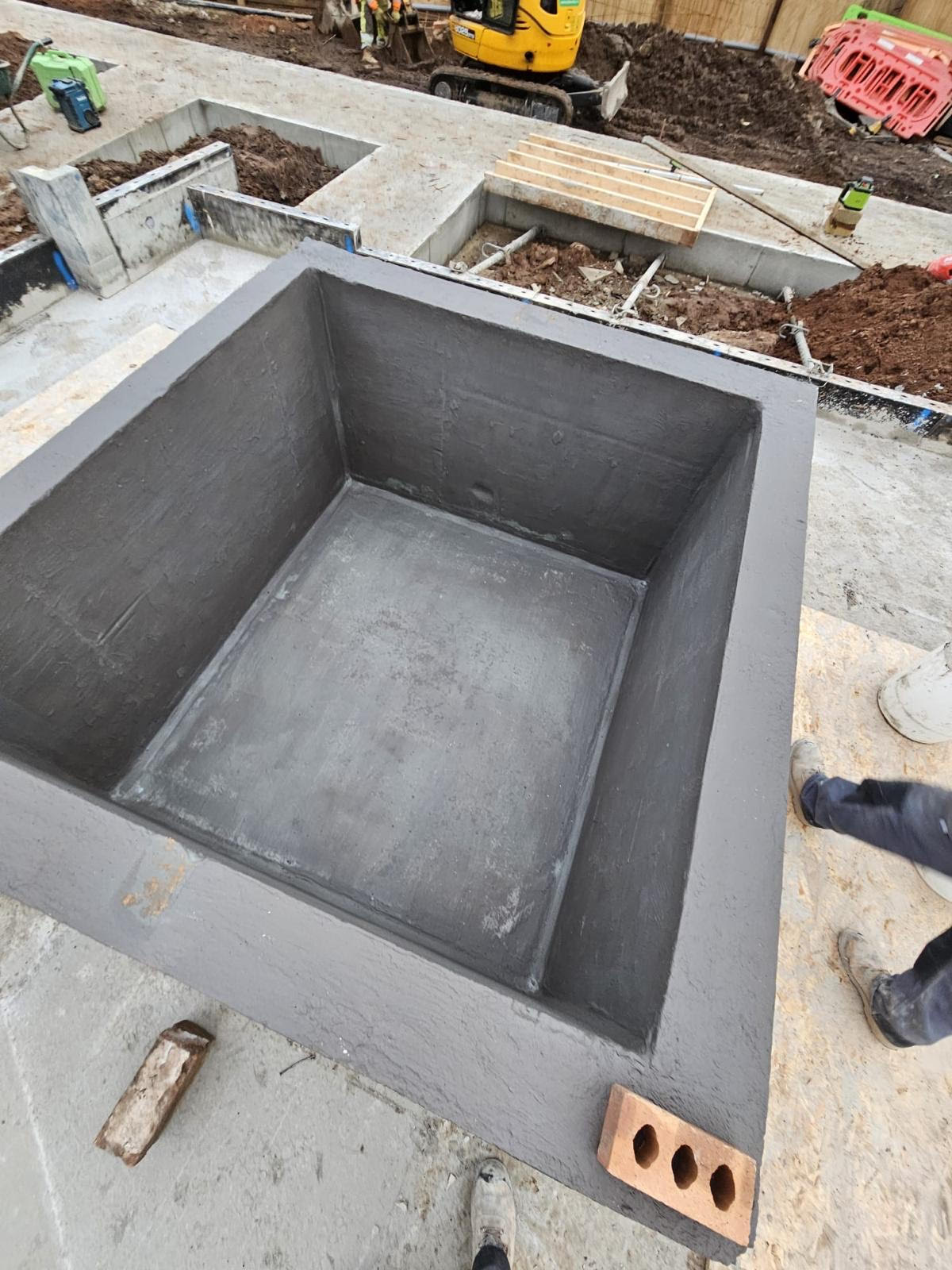Our operatives attended at the Digital Campus in central Sheffield to waterproof the inside of two sprinkler tanks.
Combined protection
When designing a waterproofing system for a new build it is essential to install two forms of waterproofing as combined protection. This is because no single waterproofing system can be considered defect-free. This principle is factored in at the design stage.
Major third part warranty providers such as NHBC, Premier Guarantees and LABC insist on the installation of combined protection as a fundamental condition of their warranty. They also require the involvement of a CSSW qualified waterproofing design specialist at the design stage.
The proposed system conforms to the requirements of BS 8102:2022. It incorporates Type B structurally integral internal waterproofing and Type A barrier protection internal waterproofing. Our highly trained technicians began by setting up the safety barriers and the confined space kit including tripod and harnesses. The team continually checked the air quality with gas monitors. We also used forced ventilation to avoid the built up of dust and vapours during product application.
We ground the concrete surfaces and filled any holes using Newton Hydrocoat 203-RM. The team cleaned the substrate with a jet wash to remove any residual dust, oil and grease. We applied Newton 903 anti lime coating to all surfaces. Following this we applied Newton Hydroseal 203 fillet to all corners and junctions. We carried out final checks for debris on the surface. Finally we dampened down the surfaces prior to the application of Newton 107F cement based waterproofing slurry.
We allowed the products to dry for at least 14 days before filling the tanks with water.
Work in confined spaces
Health and safety considerations are paramount when working in an enclosed environment such as a sprinkler tank. Our technicians have received specific training in working in confined spaces in accordance with the Confined Space Regulations 1997.








